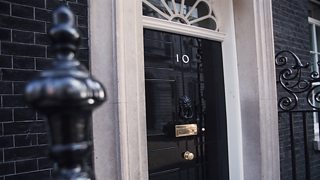10 Surprising facts about Number 10 Downing Street
It’s considered a treasured part of the nation’s heritage and one of the defining backdrops to modern British politics, but that hasn’t always been the case. The house behind one of the world’s most famous front doors has battled existential threats throughout its history, on multiple occasions.
1) The door of Downing Street hasn’t always been black – once it was green!
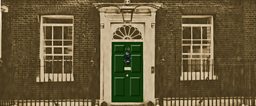
1908 was a fascinating year for historians. A means-tested pension was introduced, London became the host city of the fifth modern Olympic Games and No. 10’s front door was painted a different colour. Liberal Prime Minister Herbert Henry Asquith, who served in office from 1908 to 1916, instructed that the original black be changed to a shade of dark green. Asquith’s second wife, Emma Alice Margaret Asquith (known as a glamorous outspoken society figure with an acerbic wit), is said to have influenced the decision. Only after the fall of Asquith and collapse of the Liberal party, was the door returned to its original colour.
2) Every Prime Minister since 1997 has lived at No. 11 Downing Street
The trend was started by Tony Blair and Chancellor of the Exchequer Gordon Brown after they agreed to exchange properties: the flat of No. 11 was larger and provided more space for the Blair family of six. After taking over the leadership, Brown started his term as Prime Minister in No. 11, before moving back to the official residence of the Prime Minister later in his appointment. After the 2010 general election, David Cameron moved in to No. 11, as the new Chancellor, George Osborne, originally remained at his private home in Notting Hill. The new approach has been continued by Prime Minister Theresa May and Chancellor Phillip Hammond.
3) The letter box is just for show
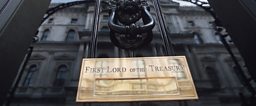
The original door, made from black oak with Georgian panelling and believed to date from 1735, was replaced in 1991 following a targeted IRA mortar attack, which left four people with minor injuries. The reinforced steel replica was made to look identical to its predecessor, which is now stored at the Churchill Museum and is maintained by an official No. 10 cleaner. On Gardeners' Question Time, Head Gardener Paul Schooling says he still finds fragments of broken glass from the explosion in the flower beds.
4) There’s someone watching the entrance on a monitor all the time
Ever wondered how the door seems to open for dignitaries, ambassadors, and ministers at just the right moment? It’s not by pure luck, but by having someone on hand 24-hours-a-day. The door can only be opened from the inside and there is no chance of ever losing the keys, as there’s no keyhole! It isn’t the only entrance to the property, though – there are other ways in and out used by staff and these can be opened from the outside.
5) Downing Street has a resident cat called Larry with the title "Chief Mouser"
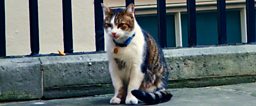
Downing Street has a long history of resident felines, including Munich Mouser, who served under Neville Chamberlain and Winston Churchill. Later came Downing Street’s longest serving mouser, Wilberforce, who notched up an impressive 18 years of service between 1970 and 1988. Larry, a tabby cat, arrived from Battersea Dogs & Cats Home in 2011, but has since opted to spend more time sleeping, or fighting with the Chancellor’s Chief Mouser – known as Palmerston – than dealing with rodents.
6) It hasn’t always been No. 10 Downing Street – once it was No. 5
The modern Downing Street was created between 1682 and 1684, after King Charles II granted the wealthy diplomat Sir George Downing, 1st Baronet, the lease to the road at the edge of the royal Whitehall Palace. Born to Puritan parents in Ireland, Downing grew up in the Massachusetts Bay Colony and later acquired the reputation as a "perfidious rogue". He employed architect Sir Christopher Wren to build 15 - 20 houses on the northern side of the street. These were constructed cheaply, with shallow foundations, in order to maximise profit. Originally some of the houses were known by the title and names of their prestigious occupants; the current No. 10 was No. 5 before the street was renumbered in 1779.
7) The road came close to being destroyed in the Second World War
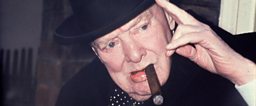
On 14 October 1940, during the Blitz, the Luftwaffe nearly destroyed the building. Damage was sustained to the kitchen and state rooms while Winston Churchill was dining in the Garden Room. The close call prompted Churchill to move his living quarters to an underground bunker in the reinforced war rooms of Her Majesty's Treasury. However, he continued to work and eat in the rooms of No. 10 throughout the war.
By the end of the Second World War, the building was in very poor condition – demolition was considered but rejected in favour of a major structural refurbishment during the 1950s.
8) The façade of the building is actually yellow but has been painted black
During the extensive renovation of the 1950s – aimed at repairing the damage sustained during WW2 – it was found that the dark black exterior was actually the result of pollution. The bricks were, in fact, yellow in colour. They were painted black in subsequent renovations.
9) The property is formed of three houses

Like Doctor Who's Tardis, the property is deceptively large, despite its modest townhouse appearance. Behind the Georgian entrance lie approximately 100 rooms, connected by a labyrinth of halls and corridors – complete with a 0.5 acre garden. Following the death of Count Bothmar, who owned the mansion at the rear of No. 10, George II offered it as a gift to Sir Robert Walpole after the deeds reverted to the crown. Walpole
– considered by many as the first British Prime Minster – accepted on the basis that the property would be offered to future government leaders. The esteemed architect William Kent was chosen to join the properties in a process that took three years to complete.
10) The last private occupant was called Mr Chicken
The last private occupant of the 10 Downing Street terrace was a man called Mr. Chicken. He was resident of one of the three properties which comprise the current 10 Downing Street. Walpole convinced Mr. Chicken to move to another property on the street in the early 1730s.
Discover more about the history and garden of No. 10 Downing Street in a special edition of Gardeners' Question Time with Eric Robson.
Gardeners' Question Time on BBC Radio 4
-
![]()
The Gardeners' Question Time Special
Eric Robson chairs a special edition from Number 10.
-
![]()
Why did Margaret Thatcher tell off No.10's Head Gardener?
Paul Schooling shares the story of being told off.
-
![]()
Podcast
Download episodes to your smartphone or tablet device.
-
![]()
About the programme
Find out more about the programme's 60 years of history.
